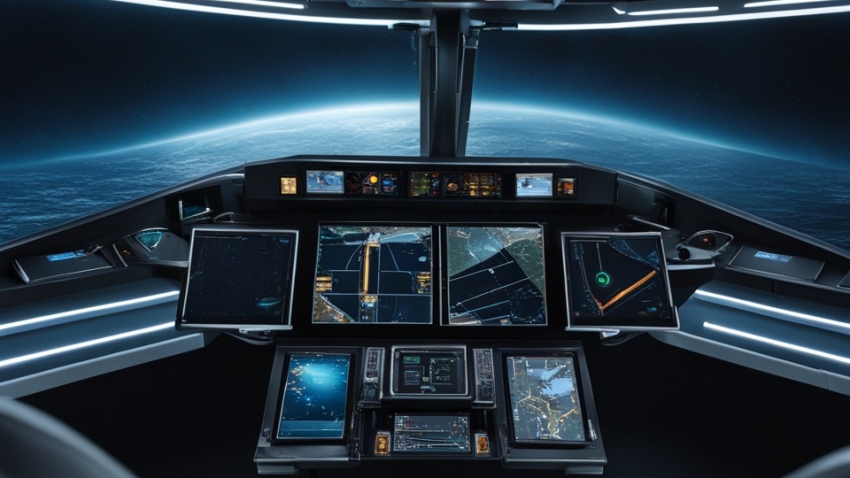
Autopilot on Ship: Advanced Maritime Navigation
The world of maritime transport has changed a lot with the use of autopilot systems on ships. These advanced technologies have made ship operations safer, more efficient, and precise. Now, from big cargo ships to luxury liners, autopilot is key for navigating the seas.
As technology grows, the importance of automated ship control systems grows too. This article will look into how autopilot systems work, their benefits, and how they fit with other navigation tools. We’ll also talk about the rules for these systems and what the future holds for them.
Read interesting things at : revolutionbookscamb
Key Takeaways
- Autopilot systems make maritime navigation safer and more efficient for all types of vessels.
- Advanced automation helps ships navigate with great accuracy and speed.
- Autopilot systems work with tools like GPS and electronic charts.
- Rules and guidelines exist for using autopilot in the maritime world.
- Advances in artificial intelligence and machine learning are shaping the future of autopilot and self-driving ships.
What is an Autopilot System on a Ship?
An auto pilot on ship is key technology that helps steer and move ships at sea. These marine autopilot systems use smart algorithms and sensors to keep a ship on course, speed, and direction with little help from humans.
Defining Autopilot Technology in Maritime Navigation
A ship autopilot is basically a computer system that watches a ship’s position, speed, and the environment. It then changes the steering and speed to keep the ship on course. This automated ship navigation tech makes controlling a ship precise and efficient. It lets the crew focus on other important tasks.
Benefits of Automated Ship Control
- Improved safety by reducing the risk of human error
- Increased efficiency through optimized routing and fuel consumption
- Reduced crew workload, allowing them to concentrate on other duties
- Enhanced navigational accuracy and adherence to planned routes
- Consistent performance in challenging weather and sea conditions
Using auto pilot on ship tech, maritime operators can navigate better, safer, and more cost-effectively. This leads to a new era of marine autopilot system use and improvement.
“Autopilot technology has revolutionized the way we navigate ships, allowing for safer, more efficient, and more reliable voyages at sea.”
Evolution of Ship Autopilot Systems
The journey of marine autopilot systems has been amazing, filled with big tech steps. These steps have changed how ships move. From simple mechanical systems to today’s smart autopilots, the change shows how clever maritime tech has become.
Old ship autopilots used gyroscopes and servo motors to keep a ship on course. But, they needed a lot of manual help. Then, new tech like electronics and sensors made autopilots smarter and more reliable.
In the 1970s and 1980s, digital tech changed everything. Computers and sensors let autopilots handle more data. This made them more accurate and cut down on crew work, making ships safer.
Now, shipboard autopilot systems use advanced tech like machine learning. They work with other systems to make navigating smarter and safer. This makes ships move better and safer.
| Evolution of Ship Autopilot Systems | Key Advancements |
|---|---|
| Mechanical-based Systems | Gyroscopes, Servo Motors |
| Computerized Systems | Digital Microprocessors, Microcontrollers |
| Advanced Autopilot Systems | Machine Learning, Artificial Intelligence, Integrated Navigation |
The story of ship autopilot systems shows how we’ve always tried to make navigation better and safer. With ongoing tech advances, we’ll see even smarter autopilots. These will change how ships are run in the future.
Key Components of Marine Autopilot Systems
At the core of ship autopilot and automated ship navigation systems are sensors and algorithms. These work together to steer and move the ship. They are key for maritime automation technology to work well. They give the data and power needed for shipboard autopilot systems to work right.
Sensors and Data Inputs
The system uses many sensors to get real-time data. This includes:
- GPS receivers for tracking the ship’s location and heading
- Gyroscopes and accelerometers to measure the vessel’s orientation and motion
- Wind sensors to detect wind speed and direction
- Depth sounders to map the seafloor and identify potential obstacles
- Radar and sonar systems for detecting other ships and obstructions
Control Algorithms and Software
The sensors send data to the autopilot’s algorithms and software. These process the data and tell the ship’s steering and propulsion what to do. The algorithms use complex math and predictive analytics to predict the ship’s actions. They adjust to keep the ship on course, even in tough conditions.
“The integration of sensors, algorithms, and software is what gives modern ship autopilot systems their remarkable capabilities in maintaining precise control and navigation.”
By combining the latest hardware and software, maritime automation technology is changing what’s possible in automated ship navigation.
Autopilot Integration with Navigation Systems
Modern ship autopilot systems work well with a ship’s navigation tech for smooth operations. At the core, they connect with the ship’s GPS and ECDIS. This ensures everything runs smoothly.
Interfacing with GPS and Electronic Charts
The autopilot uses data from the ship’s GPS and ECDIS for control. This info helps the automated ship navigation system keep the ship on course. It makes changes as needed to stay on track.
The autonomous vessel control system checks the ship’s position, speed, and direction. It uses this info for accurate steering. By working with the intelligent ship steering of GPS and ECDIS, it can navigate tricky waters safely.
| Navigation System | Autopilot Integration |
|---|---|
| Global Positioning System (GPS) | Provides vessel location, speed, and heading data to the autopilot for precise navigation |
| Electronic Chart Display and Information System (ECDIS) | Supplies detailed electronic charts and navigational information to the autopilot for route planning and obstacle avoidance |
Autopilot systems working with a ship’s GPS and ECDIS is key to modern automated ship navigation. It leads to autonomous vessel control and intelligent ship steering. This makes sailing safer and more efficient.
auto pilot on ship
The modern ship’s autopilot system has changed how we navigate the seas. It gives a high level of control over the ship’s path and movements. These self-steering ships use advanced tech to change the way captains and crews navigate.
The autopilot system is at the core of this change. It’s made up of sensors, algorithms, and software that work together. They keep the ship on course, adjust for the environment, and do complex tasks with great precision.
This tech makes sailing safer and more efficient. It also lets the crew focus on other important parts of the trip.
| Key Autopilot Capabilities | Benefits |
|---|---|
| Precise Course Maintenance | Consistent and efficient navigation, minimizing deviations and fuel consumption |
| Seamless Environmental Adaptation | Adjustments to wind, waves, and current, ensuring optimal vessel performance |
| Advanced Maneuvering | Smooth and accurate execution of turns, docking, and other complex maneuvers |
The development of auto pilot on ship tech is driven by the need for better, more efficient navigation. As the industry adopts these new tools, we can expect safer, cheaper, and greener sailing.
“The autopilot system on our ships has transformed the way we navigate, allowing us to maintain precise control and respond to changing conditions with remarkable agility.”
– *Captain Jane Doe, Merchant Marine Vessel*
Automated Steering and Maneuvering
The autopilot system on a ship does more than just keep a steady course. It also helps with automated steering and maneuvering. This makes the vessel perform better and navigate more efficiently.
Maintaining Course and Heading
The autopilot keeps the ship on a set course and heading. It uses sensors, GPS, and smart algorithms to adjust the steering. This helps the ship stay on course, even with wind, currents, and waves.
Advanced Maneuvering Capabilities
Modern autopilot systems can do more than just keep the course. They can handle complex maneuvers like turns, docking, and keeping a steady position. This is thanks to working with other navigation and control systems. It lets the ship move through tight spaces and perform precise maneuvers automatically.
| Automated Ship Navigation Features | Autonomous Vessel Control Capabilities | Intelligent Ship Steering Functions |
|---|---|---|
| Continuous course adjustment | Automated docking and berthing | Dynamic heading maintenance |
| Precise heading control | Station-keeping and position hold | Automated turn execution |
| Weathervaning and wind compensation | Automated collision avoidance | Advanced maneuvering in tight spaces |
The autopilot system combines automated navigation, control, and steering. This makes maritime operations safer, more efficient, and precise. It boosts the vessel’s performance and reliability.
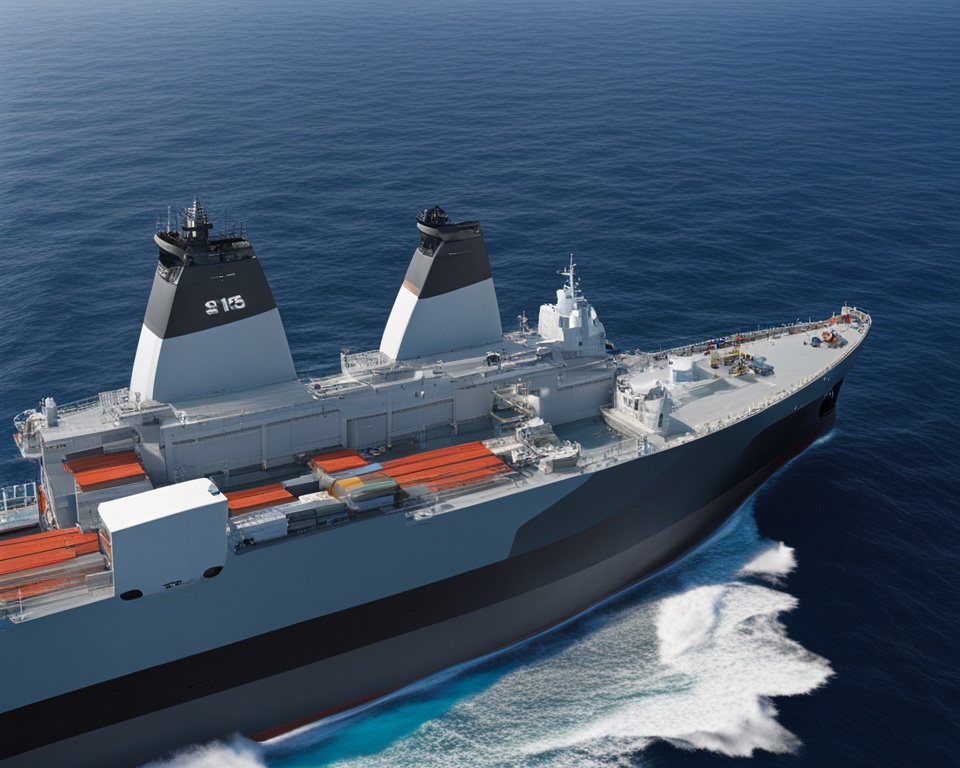
Safety and Redundancy in Autopilot Systems
The maritime industry is moving fast towards advanced ship autopilot and maritime automation technology. Safety and redundancy in shipboard autopilot systems are now key. These systems are vital for safe navigation. They keep the crew, cargo, and the ocean safe.
Today’s ship autopilot systems have many backups to prevent failures. They use extra sensors, control units, and power sources. This way, a ship can stay on course even if something goes wrong with the main system.
| Safety Feature | Redundancy Measure |
|---|---|
| Sensor Redundancy | Multiple sensors, including GPS, compass, and speed log, to cross-reference data and ensure accurate navigation inputs. |
| Control Unit Backup | Redundant control units that can seamlessly take over in case of a primary unit failure. |
| Power Supply Redundancy | Backup power sources, such as emergency generators or battery banks, to maintain system operations during power outages. |
These safety and redundancy features make ship autopilot systems very reliable. They let these systems work well on their own. This keeps the ship and its crew safe. Maritime automation technology is making shipping safer and more efficient.
“Redundancy is the key to reliability in any critical system, and shipboard autopilot systems are no exception. Ensuring multiple layers of backup and failsafe measures is essential for maintaining the safety and integrity of maritime navigation.”
Regulatory Standards and Guidelines
The maritime industry is moving fast with automated ship navigation and maritime automation technology. It’s crucial to have strong rules and guidelines. The International Maritime Organization (IMO) is key in setting these rules. It’s a UN agency focused on making the seas safer and more secure for everyone.
International Maritime Organization (IMO) Regulations
The IMO has made rules and guidelines for automated ship navigation systems. These include:
- SOLAS (Safety of Life at Sea) Convention: This treaty sets the minimum standards for ships, including their equipment and automation systems.
- ISM (International Safety Management) Code: This code requires shipping companies to have a safety management system. It covers automated navigation systems too.
- STCW (Standards of Training, Certification, and Watchkeeping) Convention: This sets the minimum training and certification for seafarers. It includes those who work with maritime automation technology.
The IMO’s rules help make sure automated ship navigation systems are used safely. They focus on keeping ships, crew, and the ocean safe.
“The IMO regulations provide a crucial roadmap for the maritime industry to navigate the integration of automated ship navigation systems, ensuring the safety and reliability of these advanced technologies.”
The IMO keeps updating its regulatory standards to match new tech in maritime automation.
Autopilot in Autonomous Vessel Operation
The maritime industry is moving towards using autopilot systems more. These systems are key for autonomous ships to navigate safely and efficiently. They help ships move and steer with little or no human help.
Autopilot systems work with many sensors, GPS, and electronic charts. This lets the ship stay on course without needing a person to watch it all the time. They use smart algorithms and software to keep track of the ship’s location and speed. They make changes as needed to keep the ship safe and running well.
Autopilot makes ships better at doing tricky tasks like docking and avoiding collisions. This makes operations safer and more efficient. It’s a big step forward for the maritime industry.
| Feature | Benefit |
|---|---|
| Integrated Navigation Sensors | Precise course and heading maintenance |
| Sophisticated Control Algorithms | Improved maneuvering capabilities |
| Continuous Environmental Monitoring | Enhanced safety and situational awareness |
Autopilot systems are key to making ships work on their own. They’re changing how we think about moving things on the water. Soon, ships might be able to sail the seas with amazing precision and safety, changing the future of shipping.
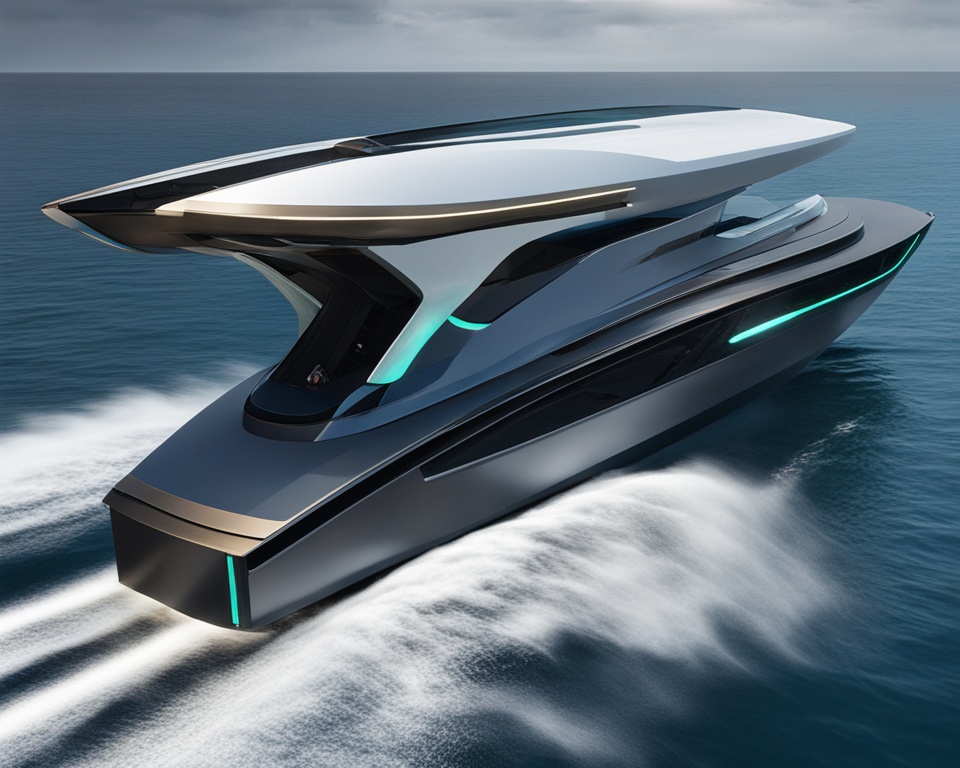
“The integration of autopilot systems with autonomous vessel operation is a crucial step towards a more sustainable and technologically advanced maritime industry.”
Training and Crew Familiarity
The maritime industry is moving fast towards advanced ship autopilot and maritime automation technology. It’s vital that crews know how to use these shipboard autopilot systems safely. Training helps operators use these complex technologies right, reducing risks from misuse or confusion.
Operator Intervention and Override Controls
Even with automation, people are key to safe maritime operations. Crews need to know how to take control of the ship autopilot in emergencies or if it’s not working right. This is crucial for safety.
Training is key to making sure crews can handle the maritime automation technology on their ships. They should learn about the shipboard autopilot systems, what they can do, and how to take control when needed. Training should also cover how to handle emergencies.
| Key Training Elements | Importance |
|---|---|
| System Functionality and Limitations | Ensures crew understands the capabilities and constraints of the ship autopilot, enabling appropriate decision-making and intervention. |
| Monitoring and Troubleshooting | Empowers crew to effectively monitor the maritime automation technology, identify potential issues, and initiate corrective actions. |
| Emergency Procedures and Override | Prepares crew to safely and effectively override the shipboard autopilot systems in critical situations, prioritizing the safety of the vessel and crew. |
By focusing on thorough training and making sure crews know about ship autopilot and maritime automation technology, the maritime industry can keep these systems safe and efficient. This makes maritime operations safer and more reliable.
Challenges and Limitations
The maritime industry is moving towards automated ship navigation and maritime automation technology. But, there are challenges and limitations that need to be tackled. One big concern is making sure these systems are safe from cyber threats.
Another issue is how automation affects crew roles. With more automation, crew might not be as involved in navigation. This could lead to a drop in their skills, affecting safety and how they handle emergencies.
Also, the rules for using automated ship navigation systems are still changing. Navigating the complex web of international maritime regulations and guidelines can be a significant hurdle for ship owners and operators.
| Challenges | Limitations |
|---|---|
| Cybersecurity | Crew Engagement |
| Regulatory Compliance | Evolving Regulations |
Even with challenges, the benefits of automated ship navigation and maritime automation are clear. As the industry changes, it’s important to work on these issues. This will help make sure these new technologies are used safely and efficiently.
“The key to successful automation is not to replace human decision-making, but to enhance it through the seamless integration of technology and human expertise.”
Future Developments and Advancements
The maritime industry is always changing, and ship autopilot systems are no exception. They’re set to see big changes soon. One big update is the use of artificial intelligence (AI) and machine learning (ML) algorithms. These will change how ships move and are controlled.
Artificial Intelligence and Machine Learning
Adding AI and ML to autopilot systems means they can learn from past data. This makes them smarter and better at making decisions. They’ll be able to navigate on their own, use less fuel, and be safer. Plus, they’ll need less human help.
Integration with Unmanned Systems
Another big change is how these systems will work with unmanned and autonomous ships. As more ships become self-driving, autopilot systems will be key. They’ll help make these ships safe and efficient. This will lead to more automation, remote control, and more self-driving ships. It will change how we move goods by sea.





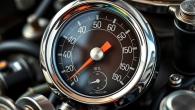


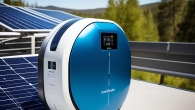
Leave a Reply